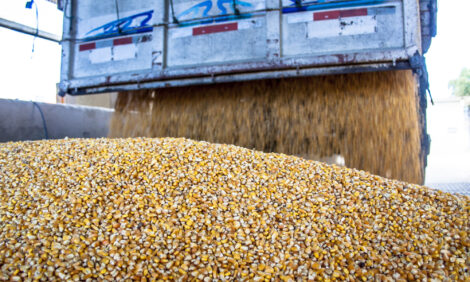



Australia's Pig Breeders Abandon Sow Stalls
AUSTRALIA - More than 60 per cent of the country's sows are now kept in group housing systems, according to the results of a survey revealed at this week's ABARES Outlook conference this week.Australia’s pork producers have passed another key milestone in their positive and world leading move to phase out voluntarily the use of “sow” or “gestation” stalls.
Interim survey results of industry progress on the phase out shows that over 60 per cent of sows are now gestation stall-free.
The industry forecasts that when the survey is complete, more than two-thirds of Australian sows will be shown to be meeting the gestation stall free phase out definition right now.
Australian Pork Limited (APL) Chief Executive Officer, Andrew Spencer said in his speech to the Australian Bureau of Agricultural and Resource Economics and Sciences (ABARES) Outlook Conference in Canberra this week: “This is a world leading initiative, boosting Australia’s animal welfare credentials globally that puts us well ahead of what is happening in other countries.
“In Europe, pregnant sows are confined for up to 30 per cent of their pregnancy (except in the Netherlands and the UK) while in North America (US and Canada) they still typically use gestation stalls for the entirety of a sow's pregnancy.
“The gestation stall phase out initiative was our industry’s response to meet the growing desires among consumers for higher welfare food, balanced with ensuring the long term sustainability of the industry by managing the transition in a balanced/cost controlled way.
“Our industry’s ability to make the change has come through millions of dollars of investment in research and development with estimates of well over $50 million to complete this change made voluntarily by farmers.
“Despite the phenomenal efforts and progress made by the Australian industry since making the decision just over three years ago, we still face considerable difficulties and challenges.
“This includes competition from subsidised imported pork sent to Australia from countries with lower welfare standards than we have here. At the same time, our industry has been impacted by high profile campaigns from anti-farming groups that have mislead consumers and worse still, farm invasions by these groups under the guise of protecting animal welfare. If animal welfare is the true motivation for these groups then they should be supporting Australian farmers in implementing their world leading initiative.”
Mr Spencer explained that the broader challenge for Australian pig farmers was not only communicating its positive results in animal welfare, but also its leadership on environmental initiatives including its management of by-products, reduction in carbon emissions and the positive impact this has on production costs.
Gaining recognition and managing consumers’ expectations about different types of pork production, the high quality Australian pork and how healthy it is to eat are also high on our agenda.
Mr Spencer added: “Rest assured as proud and progressive farmers producing wholesome Australian pork, we are listening to and responding to consumers. In turn, we call on Australian consumers to support our world leading initiatives.”
Note: Definition of gestation stall-free in Australia: This means that a sow will only spend up to five days in a mating stall, to stabilise pregnancy and then later be moved into a farrowing crate or birthing stall, up to a week before she is due to give birth. In this way, Australia’s pregnant sows only spend a maximum of 10 per cent of their total pregnancy individually confined under the gestation stall-free definition.







